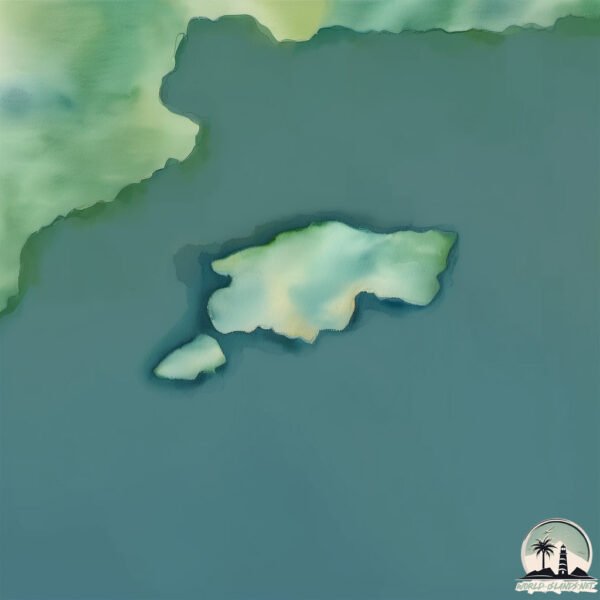Welcome to Anderson , a Polar island in the South Pacific Ocean, part of the majestic Pacific Ocean. This guide offers a comprehensive overview of what makes Anderson unique – from its geography and climate to its population, infrastructure, and beyond. Dive into the details:
Geography and size of Anderson
Size: 0.676 km²Coastline: 4.4 kmOcean: Pacific OceanSea: South Pacific OceanContinent: South America
Anderson is a Tiny Island spanning 0.676 km² with a coastline of 4.4 km.
Archipel: –
Tectonic Plate: South America – A major plate covering the South American continent and part of the Atlantic Ocean, known for the Andes mountain range and significant seismic and volcanic activity.
The geographic heart of the island is pinpointed at these coordinates:
Climate and weather of Anderson
Climate Zone: PolarClimate Details: TundraTemperature: Cold
Climate Characteristics: The tundra climate features long, extremely cold winters and short, cool summers. Vegetation is limited to mosses, lichens, and small shrubs due to the low temperatures and short growing seasons. Biodiversity is low, but some specialized species thrive.
Topography and nature of Anderson
Timezone: UTC-04:00Timezone places: America/La_PazMax. Elevation: 1 m Mean Elevation: -33 mVegetation: Evergreen Broadleaf ForestTree Coverage: 98%
The mean elevation is -33 m. The highest elevation on the island reaches approximately 1 meters above sea level. The island is characterized by Plains: Flat, low-lying lands characterized by a maximum elevation of up to 200 meters. On islands, plains are typically coastal lowlands or central flat areas.
Dominating Vegetation: Evergreen Broadleaf Forest
Vegetation: 2 vegetation zones – Low Diversity Island
Infrastructure and Travelling to Anderson
Does the island have a public airport? no .
Does the island have a major port? no .
The mean population of Anderson is 0 per km². Anderson is Uninhabited. The island belongs to Chile .
Continuing your journey, Isla Maycock is the next notable island, situated merely km away.
Anderson Island, Puget Sound's Secret Island
Get to know Puget Sound's magical yet least known island! Picturesque, relaxed, natural. You can be as relaxed or active as you ...
Anderson Island, Puget Sound's Secret Island
Get to know Puget Sound's magical yet least known island! Picturesque, ...
Get to know Puget Sound's magical yet least known island! Picturesque, relaxed, natural. You can be as relaxed or active as you ...
The Anderson Island Story
Rick Stockstad hosts this original film by the Historical Society, ...
Rick Stockstad hosts this original film by the Historical Society, that presents the history of Anderson Island, from 20000 years ago, ...
5 Islands in 5 Days: Anderson Island
Mimi and Jake head 15 miles south of Tacoma to Puget Sound's ...
Mimi and Jake head 15 miles south of Tacoma to Puget Sound's southernmost island, Anderson Island.
Chile is classified as Emerging region: G20: Group of Twenty – Major economies comprising both developed and emerging countries, representing the world’s largest economies. The level of income is Upper middle income.
News – Latest Updates and Headlines from Anderson
Stay informed with the most recent news and important headlines from Anderson. Here’s a roundup of the latest developments.
Loading...
Please note: The data used here has been primarily extracted from satellite readings. Deviations from exact values may occur, particularly regarding the height of elevations and population density. Land area and coastline measurements refer to average values at mean high tide.

